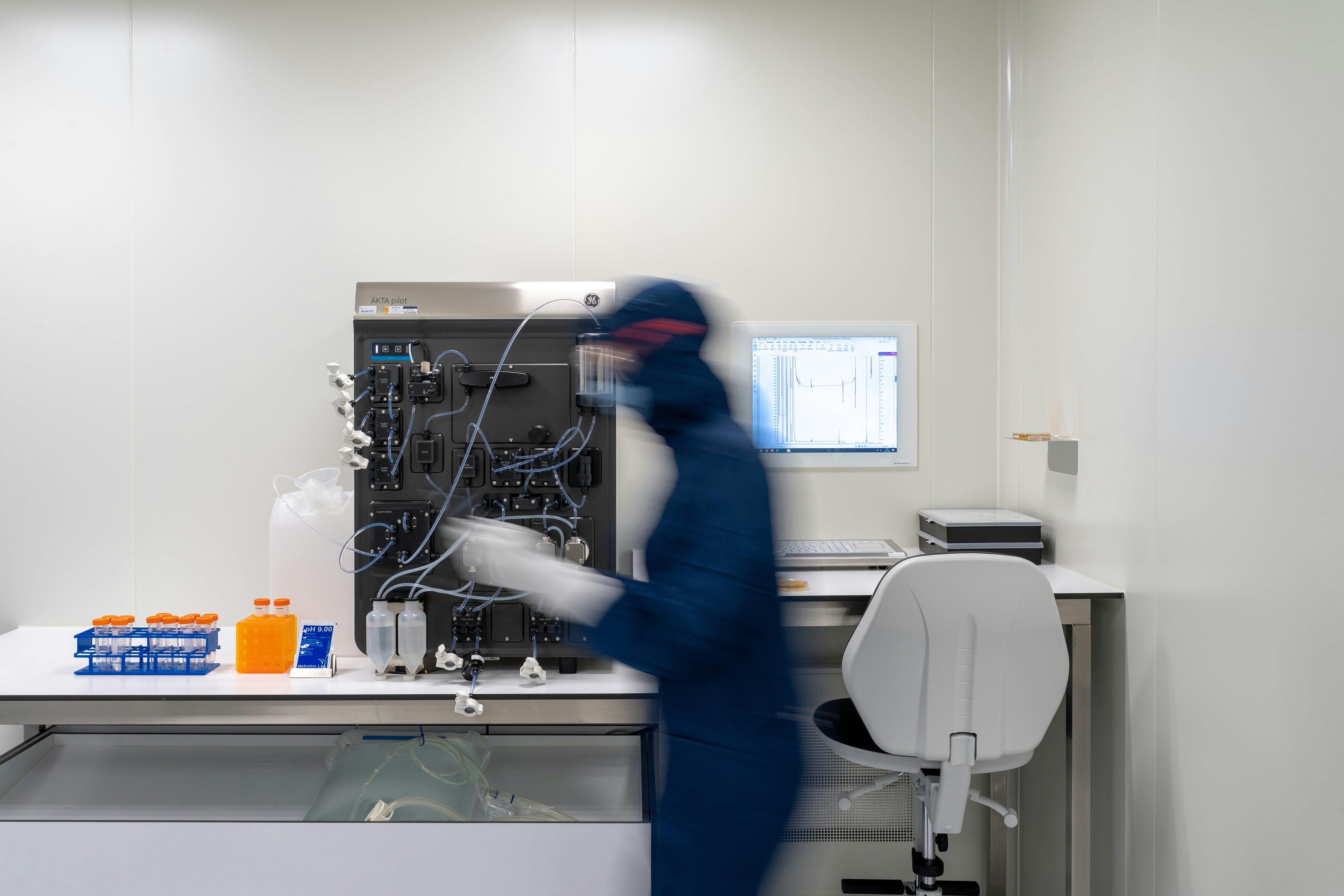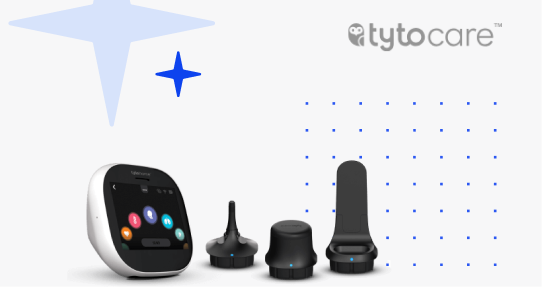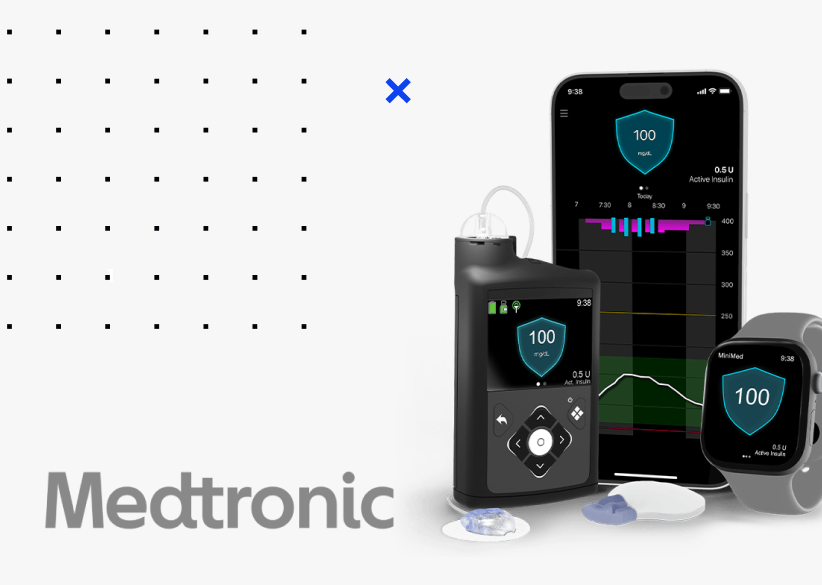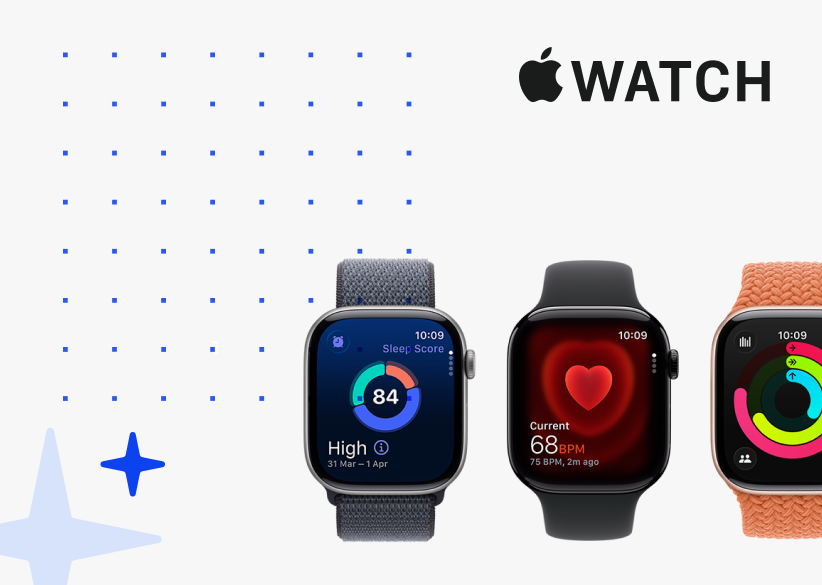AI & IoT in Healthcare
Artificial intelligence and IoT devices can fully reshape the way healthcare providers work with patient data to deliver smarter and more personalized care.
From predictive diagnostics to remote monitoring, let’s explore how advanced software solutions can turn raw information into real-time insights for better patient outcomes.


The Industry Landscape
The healthcare industry is currently undergoing a profound digital transformation, which helps to address the issues typical of traditional healthcare systems and establish intelligent, data-driven workflows.
Such changes presuppose the introduction of technologies, automation, and data analytics into every aspect of healthcare operations. Digital solutions are used to connect patients, healthcare organizations, medical equipment, and smart devices through secure platforms that enable continuous communication and insight sharing between them in real time.
AI and IoT in Healthcare by Numbers
79% of healthcare organizations reported using AI in 2024 (Microsoft Study). $187.69 billion is the projected size of the global AI in healthcare market by 2030 (AI in Healthcare Market Growth & Trends Report by Grand View Research). $594.5 billion is the volume that can be hit by the IoT in healthcare market by 2034 (Vantage Market Research).
60 % of healthcare providers name remote patient monitoring as a core use case of the Internet of Things adoption (Industry Research).
by 2030
by 2034
What Drives AI and IoT Adoption in Healthcare
Need for real-time data to support preventive care and better diagnoses
Growing demand for telemedicine
Operational efficiency and cost optimization goals in hospitals
Patient expectations for personalized patient care
Advancements in cloud computing and 5G connectivity
Regulatory and financial support
What Is the Role of Data in Modern Healthcare?
Data is the fuel of modern medicine. Every interaction with patients, including lab tests and check-ins, generates valuable information that can significantly impact doctors’ decisions. When data is properly collected and analyzed, it can become a powerful tool for improving diagnosis and treatment.
What Issues of Traditional Healthcare Systems Can Be Solved by AI and IoT
Traditional healthcare systems often struggle with bottlenecks in their processes, data fragmentation, inaccurate diagnoses, inefficient treatments, and delayed interventions.AI and IoT technologies directly address these challenges by offering powerful tools for continuous data collection and its intelligent analysis.
In many rural and low-resource regions, patients often do not have timely access to specialized patient care. Long waiting times, staff shortages, and travel barriers are among the factors that further reduce the quality of service.
How AI and IoT can help:
Telemedicine platforms powered by AI connect patients with doctors in a remote format. This reduces the need for hospital visits.
Wearable IoT devices (like smart watches, glucose monitors, ECG patches, etc.) send vital data directly to healthcare providers for remote diagnosis and follow-up.
AI-driven chatbots and virtual health assistants provide 24/7 consultations and triage, which helps clinics prioritize urgent cases.
One of the most serious issues is the fact that traditional systems store data in silos. Electronic health records (EHRs), lab results, and medical imaging are often disconnected. As a result, it is difficult and very time-consuming to analyze all the information collectively.
How AI and IoT can help:
IoT systems collect data from multiple sources and devices. Further, this data is integrated into centralized platforms.
AI-based data management systems structure and interpret large volumes of data received from EHRs, lab results, and many other sources.
The use of interoperability standards like FHIR (Fast Healthcare Interoperability Resources) and HL7 ensures seamless data exchange between systems.
Traditional healthcare approaches are typically focused on treating illnesses after symptoms appear. Nevertheless, in many cases, it makes more sense to predict potential diseases and prevent them. This will help optimize costs and ensure better clinical outcomes.
How AI and IoT can help:
Predictive analytics powered by AI relies on the data received from wearables and sensors to detect early signs of disease.
Continuous IoT monitoring systems alert healthcare providers when any abnormal patterns (such as irregular heartbeats or blood pressure spikes) are detected.
AI helps develop personalized health plans and lifestyle recommendations based on individual health data and needs.
A lot of healthcare facilities face operational challenges like high administrative burdens, staff shortages, and inefficient workflows. Manual tasks consume time and resources, but can’t guarantee the desired results, which increases healthcare costs and leads to an increased risk of errors caused by human factors.
How AI and IoT can help:
AI can be applied to automate a wide range of administrative tasks, including but not limited to scheduling, billing, patient triage, etc.
IoT sensors are installed to track and improve equipment utilization.
Predictive maintenance systems prevent equipment failures before they happen.
AI optimizes staff allocation and supply chain management.
Fatigue, information overload, or limited visibility into a patient’s full medical history are the factors that can lead to diagnostic inaccuracies, even when the most experienced clinicians are working on the case.
How AI and IoT can help:
AI-powered diagnostic tools (for instance, image recognition in radiology and pathology) provide decision support, as they can detect anomalies with high precision.
IoT devices ensure consistent, high-quality data collection from patients. Thanks to this, clinicians have complete information.
Machine learning algorithms analyze thousands of data points and can highlight patterns that might go unnoticed by humans.
Patients often do not demonstrate enough involvement in their own treatment. They fail to follow prescribed plans and maintain healthy habits.
How AI and IoT can help:
Wearables and mobile apps track fitness, sleep, glucose levels, and medication adherence.
AI-driven health apps provide personalized feedback and progress tracking. Apart from that, such applications can send reminders of different types based on the ongoing needs of each user.
Gamification and behavioral analytics encourage consistent engagement with patient care plans.
Traditional reporting systems are slow to aggregate and analyze health data. As a result, medical organizations often respond late to outbreaks or emerging health trends.
How AI and IoT can help:
IoT sensors and connected devices provide real-time data on disease spread and population health indicators.
AI algorithms can analyze massive datasets to identify patterns and predict outbreaks.
Governments can allocate resources and monitor outcomes more efficiently.
Healthcare IoT Devices
IoT devices in healthcare support various applications, from remote monitoring and diagnostics to hospital operations and preventive care.
Wearable Health Monitors
Wearables continuously track patients’ vital signs and activity and further send medical data to healthcare providers or mobile apps. They are often used for chronic disease management, fitness tracking, and early detection of anomalies.
Smartwatches and fitness trackers
Continuous glucose monitors
ECG and heart rate monitors
Smart blood pressure cuffs
Pulse oximeters and temperature patches
Remote Patient Monitoring Devices
These devices are designed to be used outside clinical settings. They transmit health metrics to doctors for continuous patient care and remote health monitoring. Apart from this, such devices bring high value for post-surgery recovery and elderly care applications.
Smart weight scales and body composition monitor
Remote ECG and cardiac monitors
Blood glucose meters and insulin delivery systems
Connected spirometers (for COPD and asthma)
Smart pill dispensers and medication adherence devices
In-Hospital IoT Devices and Sensors
These devices help healthcare professionals monitor patients and assets to ensure safety and operational efficiency.
Bedside monitors connected to central systems
Smart hospital beds
Location tracking sensors for staff, patients, or equipment
Smart infusion pumps and connected ventilators
Asset monitoring sensors for medical equipment maintenance
Diagnostic and Imaging Devices with IoT Connectivity
Modern diagnostic tools use the Internet of Things (IoT) for real-time data sharing and AI-based analysis. They ensure faster diagnostics and centralized data storage.
Smart ultrasound scanners
Connected MRI and CT machines
Digital stethoscopes and otoscopes
IoT-enabled laboratory analyzers
Medication Management Devices
These IoT tools help patients and caregivers manage prescriptions and adherence more effectively. Their use reduces medication errors and supports chronic disease care.
Smart pill bottles that alert users when doses are missed
Connected inhalers
Automated medication dispensers with remote monitoring
Smart IV (intravenous) pumps for dosage control
Smart Home Health and Elder Care Devices
IoT can help seniors and patients live independently while staying monitored. This technology prevents accidents and provides peace of mind for caregivers.
Fall detection sensors and smart flooring
Motion and activity tracking systems
Voice assistants integrated with health monitoring
Smart mattresses that monitor sleep and vital signs
Implantable and Ingestible IoT Devices
Highly advanced IoT technologies can be embedded inside the body for continuous internal monitoring.
Smart pacemakers and defibrillators with remote telemetry
Ingestible sensors for medication tracking
Glucose-sensing implants
Neurostimulators for pain and seizure control
Environmental Monitoring Sensors
The Internet of Things can help keep healthcare environments safe and sterile. These capabilities are crucial for infection control and facility sustainability.
Air quality and temperature sensors
Humidity and pressure sensors in operating rooms
Cold chain monitoring for vaccines
Smart lighting and HVAC control systems
Asset Tracking Devices
IoT optimizes healthcare supply chains and asset utilization. This helps improve traceability and ensures the timely delivery of critical items.
RFID and GPS trackers
Smart inventory management systems
Real-time tracking of blood bags and organ transport containers
Emergency and Alert Devices
IoT-powered emergency systems ensure fast response in critical situations.
SOS-enabled wearables for patients with cardiac or fall risks
Smart ambulance systems connected to hospitals
Panic buttons for staff safety
Common Areas of Application of AI and IoT in Healthcare
The combination of AI and IoT has already found a wide range of use cases within the healthcare industry.
IoT-enabled medical devices (glucose monitors, ECG patches, wearable sensors, etc.) continuously track patient vital parameters. The data is instantly transmitted to a common server and can be further displayed to medical professionals and patients via specialized apps. AI analyzes these streams of data to detect abnormalities, predict potential health consequences, and trigger alerts for early intervention when needed.It is expected that the remote patient monitoring system market will grow to $110.71 billion by 2033 from $22.03 billion in 2024. (Grand View Research)
Examples of applications:
Chronic disease management
Post-surgery recovery and rehabilitation tracking
Home healthcare for elderly patients
Virtual consultations with AI triage support
Benefits:
Reduced the number of hospital readmissions and emergency visits
Preventive care
Expanded access to healthcare services
AI models are trained on large medical datasets. Thanks to this, they are able to identify diseases and abnormalities faster and more accurately than any traditional methods. By combining AI tools with IoT imaging devices, healthcare providers can successfully automate parts of the diagnostic process.
Examples of applications:
Computer vision for radiology (detecting tumors, fractures, infections)
Pathology image recognition
AI-driven genomics and precision diagnostics
Clinical decision support tools integrated with EHRs
Benefits:
Improved diagnostic accuracy and consistency
Optimized clinician workload
Reduced diagnostic turnaround time
Earlier treatments
IoT sensors and AI-powered automation transform hospitals into smart facilities. Thanks to advanced systems that continuously monitor resource allocation and actual consumption, hospitals can optimize energy, water, and equipment utilization, as well as scheduling for medical professionals. According to different studies, smart hospital systems can ensure a 30% reduction in energy costs, while full ROI can often be achieved within 2-4 years.
Examples of applications:
Smart beds (they help detect occupancy and monitor patient movement)
Real-time asset and equipment tracking with IoT tags
Predictive maintenance for medical equipment
AI-driven patient flow optimization
AI-driven patient flow optimization
Benefits:
Improved operational efficiency
Cost-effectiveness
Reduced administrative workload
Enhanced patient comfort and safety
Artificial intelligence can analyze data received from various sources, including IoT devices, medical records, and historical trends. Based on it, AI can predict future health events and enable physicians to intervene early. According to Deloitte, by 2040, early disease detection and prevention can help the US healthcare system save up to $2.2 trillion annually. More than $500 billion per year will be saved thanks to the reduced number of medical and prescription drug claims.
Examples of applications:
Prediction of cardiac events or stroke risk based on wearable data
Early detection of sepsis or infections
Personalized treatment plans
Forecasts of hospital admissions or resource needs
Benefits:
Reduced hospitalizations
Lower healthcare costs
Enhanced patient quality of life
Solutions enriched with AI and IoT functionality empower patients to manage their health through continuous tracking and personalized feedback. Research shows that active patient engagement has a direct impact on increasing the quality of care and clinical outcomes. Apart from this, hospitals can observe a reduction of avoidable costs, like those related to readmissions.
Examples of applications:
Wearable devices for tracking lifestyle and fitness metrics
AI-based digital health assistants
Medication-related alerts and behavioral reminders
Mobile apps for chronic condition support
Benefits:
Increased patient compliance with treatment plans
Promotion of long-term healthy behaviors
Enhanced communication between patients and doctors
AI accelerates research and development thanks to its ability to process massive datasets obtained from IoT devices, lab results, and clinical trials. Analyses conducted by various organizations suggest that automation of some stages of drug discovery can ensure cost reductions of 40-50%.
Examples of applications:
AI-powered modeling for drug target identification
IoT-driven real-time data collection from trial participants
Simulation and digital twin modeling of drug behavior
Analysis for adverse drug reactions
Benefits:
Accelerated drug development cycles
Reduced research costs
Better safety monitoring
Thanks to IoT devices and AI analytics, healthcare and governmental organizations can effectively work with public health data in real time.
Examples of applications:
Disease outbreak prediction and epidemic control
IoT sensors tracking pollution and air quality
Population-level analytics
Resource allocation
Emergency response systems
Benefits:
Faster response to public health crises
Improved population health outcomes
Evidence-based policy decisions
In the modern healthcare system, protection of sensitive patient data is one of the most serious challenges and obligations. AI and IoT can improve data integrity and security.
Examples of applications:
AI-based threat detection
Anomaly monitoring
Automated compliance with HIPAA and GDPR regulations
Benefits:
Higher patient trust
Enhanced regulatory compliance
Reduced data breach risk
Strengthened interoperability across systems
Implantable IoT medical devices equipped with sensors and wireless communication open a new chapter in medicine. They allow for continuous health monitoring and adaptive treatment, which can ensure significantly better outcomes.
Examples of applications:
Smart insulin pumps
Connected prosthetics and orthopedic devices
Neural implants for neurological disorder monitoring
Benefits:
Automatic therapy adjustments
Improved patient safety thanks to early malfunction alerts
Access to valuable clinical data
AI-powered robotic systems enhance surgical precision and safety. Such robots can conduct surgeries that previously were impossible due to the limitations of human skills. Moreover, IoT integration provides real-time monitoring of surgical tools and patient vitals. According to the Precedence Research report, the global surgical robotics market size will hit $45.93 billion by 2034, while in 2024, this figure was at the level of $10.76 billion. This market growth is driven primarily by increased demand for minimally invasive surgeries.
Examples of applications:
Highly precise robotic surgeries
AI-assisted motion control
3D visualization
IoT-powered postoperative recovery tracking
Benefits:
Shorter recovery times
Fewer complications
Increased precision and consistency
Data-driven surgical performance analysis
Who Can Benefit from Artificial Intelligence and IoT Solutions in Healthcare?
AI and IoT technologies are the entire healthcare ecosystem.These solutions create value for all the participants of the industry by ensuring smarter decisions and data-driven insights.

Doctors, Nurses, and Clinicians
Faster diagnosis
Real-time patient monitoring
Decision support
Reduced workload
Hospital and Clinic Administrators
Operational efficiency
Asset management
Resource optimization
Cost reduction
Patients
Personalized care
Continuous remote monitoring
Improved engagement
Convenience and access
Healthcare IT Teams
Unified data systems
Scalable infrastructure
Cybersecurity automation
Researchers and Pharmaceutical Companies
Accelerated drug discovery
Smarter clinical trials
Predictive modeling and simulations
Health Insurance Providers
Data-driven risk assessment
Fraud detection
Introduction of preventive health programs
Public Health Agencies and Policymakers
Population health analytics
Real-time monitoring
Evidence-based decision-making
Caregivers and Families
Peace of mind and timely alerts
Better communication with medical staff
Support for independent living for elderly or disabled patients
What Solutions Can You Build to Assist Different Groups of Users?
Doctors, administrators, and patients have different needs. And here are the most highly demanded digital products that can efficiently help them solve their everyday tasks.
AI and IoT Solutions for Healthcare Professionals
Real-time patient monitoring systems enriched by IoT wearables and smart sensors
AI-assisted diagnosis solutions that analyze imaging, lab, and historical data
Predictive analytics tools
Personalized treatment planning system powered by deep learning algorithms AI-powered platforms for decision support
Automated transcription tools
Generative AI apps for report automation
Voice-to-text and text-to-voice apps to minimize the time doctors need to allocate for typing or reading documents
AI and IoT Solutions for Administrative and Operational Staff
Smart scheduling and workflow automation tools
Documentation automation applications
Predictive maintenance and asset tracking
Inventory and supply management systems
Operational analytics
Billing and insurance automation solutions
Energy and facility optimization tools
AI and IoT Solutions for Patients
Wearable heart rate, ECG, and blood pressure monitors
Chronic disease management and personalized health coaching apps
Preventive care recommendation engines
Chatbots, virtual assistants, AI-powered symptom checkers
Connected medication dispensers and trackers
Fall detection sensors and motion trackers
Smart beds and posture-monitoring devices
Connected emergency alert systems
AI-enabled video consultation tools
Why Does It Make Sense to Invest in AI and IoT Projects for the Healthcare Industry?
If you are considering launching your custom AI/IoT solution for the healthcare industry, you should clearly understand the value your product can deliver.
When it comes to healthcare, in addition to the financial benefits that such investments can bring, it is vital to recognize the social and ethical role of technology in improving human lives.The Internet of Things (IoT) and AI solutions directly impact public health, patient safety, accessibility, and overall quality of care.

Want to discuss the feasibility of your idea?
How We Can Help
At Akveo, we build AI- and IoT-powered solutions that help organizations revolutionize healthcare by introducing more efficient health monitoring, data processing, streamlining operations, and delivering more personalized treatment. What services can we provide to ensure business value and improve patient outcomes?
Main Barriers to AI and IoT Adoption in Healthcare
The introduction of AI and IoT brings clear benefits to the healthcare industry. However, many organizations still face significant doubts and concerns regarding the implementation of these technologies.
Successful Examples of Using AI and Internet of Things (IoT) in Healthcare
Today, the industry has seen a range of successful AI- and IoT-driven solutions. The next one may be yours!


TytoCare
TytoCare enables remote physical exams through an IoT kit that patients use at home. AI assists in guiding users and interpreting results. In such a way, patients can understand their diagnoses and get prescriptions without the need to leave their homes.


Medtronic
Medtronic’s connected insulin pumps and continuous glucose monitoring systems are powered by IoT sensors and AI algorithms. Thanks to automatic tracking, users can control and manage blood sugar levels in real time.


GE Healthcare Edison Platform
The platform connects imaging systems, devices, and data sources across hospitals to optimize workflows and deliver predictive insights. It uses AI models to assist with image analysis and operational decision-making.


Apple Health and Apple Watch
The platform connects imaging systems, devices, and data sources across hospitals to optimize workflows and deliver predictive insights. It uses AI models to assist with image analysis and operational decision-making.
Future AI and IoT Trends in Healthcare
To launch a future-ready solution, you need to understand the expectations and the key trends shaping the industry.
Emotional and Mental Health AI
It is predicted that AI will increasingly focus on emotional intelligence and behavioral health. This will ensure broader access to mental health support and early intervention.
What solutions will be in high demand?
Wearable IoT devices analyzing stress or mood via biosignals
AI mental health chatbots
Predictive analytics that can identify early signs of depression or burnout
Interconnected Smart Hospitals
In the future, hospitals will operate as data-driven ecosystems. This will streamline workflows, as well as ensure the reduction of human errors and enhancement of operational efficiency.
Types of solutions to consider:
IoT sensors for tracking patients, staff, and medical assets
AI-driven patient flow and resource allocation management
Robotics assisting in surgery and sterilization
Rise of Home-Based and Decentralized Care
Hospitals won’t be the only places where patients can continue their treatment. The combination of the Internet of Things (IoT) and AI will allow for the extension of professional-grade care beyond hospital walls. Thanks to this, many more patients, and especially aging populations, will have access to high-quality, comfortable care.
Examples of solutions:
Home-based diagnostics powered by smart devices
AI-powered remote care platforms, which will be widely used for chronic disease management
Wearables integrated with telehealth and EHR systems
Conversational AI and Virtual Health Assistants
AI-driven conversational systems will be implemented as proactive companions for patients and clinicians. Thanks to such solutions, it will be possible to ensure higher patient engagement and lower administrative workload for healthcare staff.
Ideas for your future project:
Virtual nurses (such solutions will be able to monitor symptoms and offer personalized health-related recommendations)
AI triage tools integrated into telehealth platforms
NLP for voice-based medical documentation
How We Organize the Development Process
Our work with you will include clear steps that will lead us to success.
Every project starts with understanding your challenges and your vision. There is no sense in innovation when it doesn’t have a practical application. We will attentively study your workflows and pain points to identify where AI and the Internet of Things (IoT) can bring real value.
Instead of wasting time on long assumptions, we prefer to build a quick prototype. It will let you test your idea early in a real-world environment. It’s the most efficient way to validate what works and define the aspects that need fine-tuning.
We will analyze all your existing systems and workflows to ensure the smooth integration of your solution and minimal disruption. The technologies and tools that we will choose will guarantee the stable performance of your software, its scalability, and security.
At this stage, all the key technical tasks are executed. While designers work on the look and feel of your app, developers build the functionality based on your requirements. Apart from this, we always attentively test our solutions to fix all the bugs before users can detect them.
When your solution is ready to go live, the real learning begins. We will continuously analyze performance and user feedback. Real-time insights will help us refine the system to keep it accurate and easy to use as your needs evolve.
The moment of software delivery doesn’t mean that our partnership has come to an end.Our experts will stay with you to monitor performance as long as you need and ensure everything runs flawlessly. Want to add new features? No problem. We can do it for you!
Why Choose Akveo as Your Development Partner
We highly value our clients and their time. That’s why we do our best to deliver high-quality services without delays and hidden costs. Here’s what you can expect if you choose us for your next project.
Transparency at Every Step
We believe that great collaboration is impossible without trust and openness. From the first day of working with us, you will have complete visibility into your project. You will be continuously informed of the progress and all key decisions. We will make sure that you will always know what is happening and what comes next.
Well-Established Workflows
Over more than 10 years of experience in working on complex software projects, we have developed structured workflows. Our process is based on the combination of agile flexibility and proven best practices. This ensures high productivity and rapid iterations.
Partnership Aimed at Long-Term Success
For us, every project is not a simple transaction, but a collaboration. Our team stays proactive. We share our ideas and strategic guidance throughout your journey. Our goal goes much beyond a successful launch of your solution. We help your business grow and leverage the value of technology in the long term.
Deep Domain Knowledge in Healthcare
Healthcare is one of the most highly regulated industries. And we understand that. Over the years of work with customers from this industry, we have accumulated deep healthcare domain expertise. Thanks to our rich knowledge and practical skills, we build innovative solutions that are fully compliant and secure in real-world medical settings.
Seamless Integration with Your Systems
When we build our software products, we always pay attention to the existing setup and systems that are already being used by our clients. For us, it is crucial to make the implementation of new tools as smooth and seamless as possible without rebuilding the entire infrastructure.
Direct Communication with Our CTO
At Akveo, we always openly communicate with our clients. In addition to this, you will have the possibility to work directly with our CTO, Evgeny Lupanov, who has more than 13 years of experience in AI and related fields. You will get his guidance from day one, which will help you make strategic decisions faster and without doubt.
We are always open to new ideas!
It doesn’t matter whether you already have a clear concept for your next healthcare solution or you are just considering the feasibility of investing in AI and IoT. We are here to help you. Our experts are ready to support you at any stage of your project, from ideation to implementation and post-launch maintenance.

.webp)